Research Tools
We are developing a wide variety of tools for open source and high throughput neuroengineering. Many items are available at our lab repository http://github.com/kemerelab. Some are highlighted below.
Bleeding-edge
AJP GRIN-Ephys
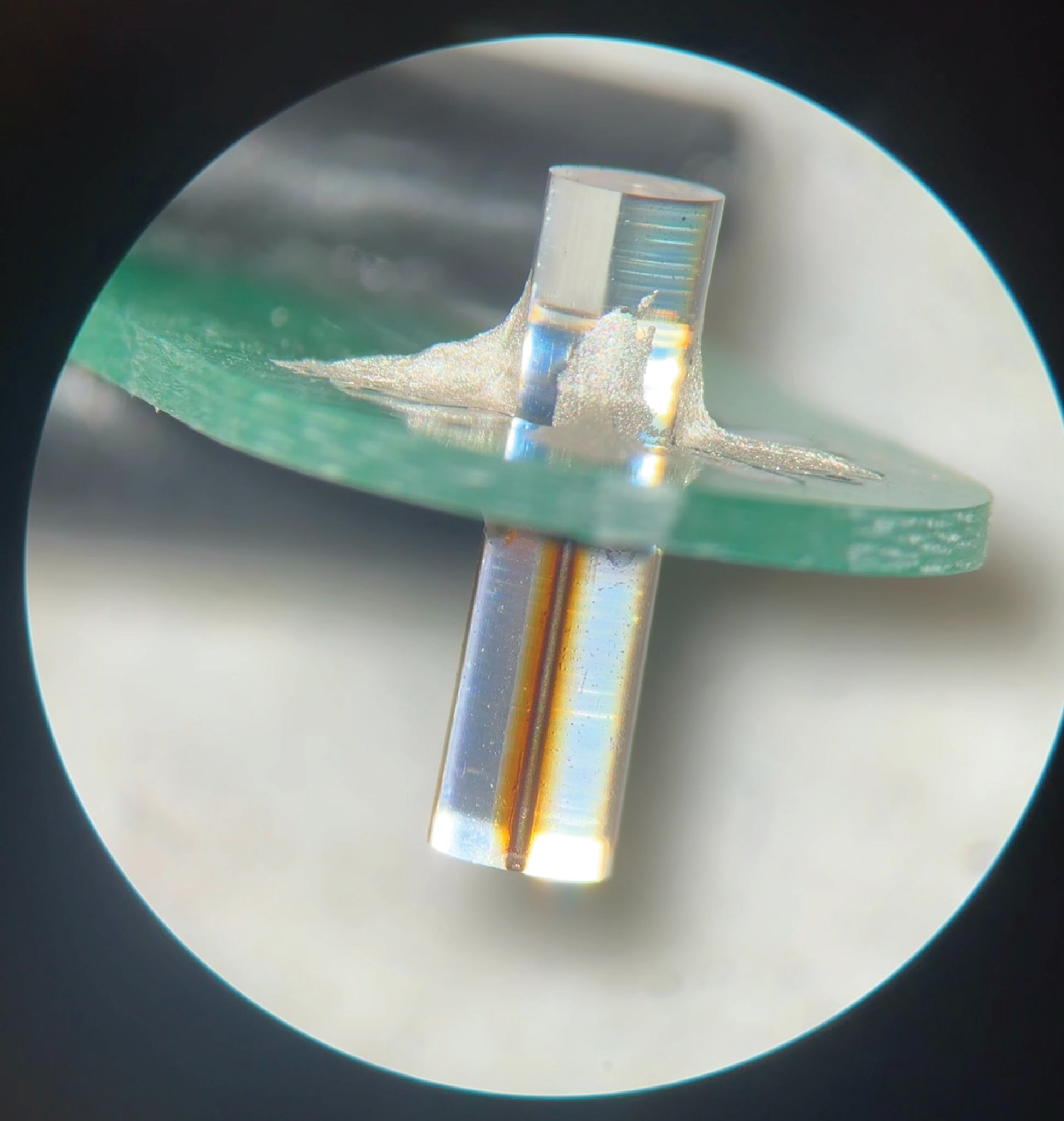
One of our ongoing projects is to develop easy ways for integrating electrophysiology with imaging in freely moving animals. We are using Aerosol Jet Printing to pattern electrodes directly onto the GRIN lenses used for miniscope imaging. This has the potential to vastly simplify manufacturing for these systems. We are excited to collaborate on this project!
Software
GhostiPy
GhostiPy is a spectral (frequency-domain) analysis toolkit. At it’s core, it provides an efficient engine which can perform out-of-core convolutions on extremely large data sets. Other useful features include:
- Helper functions for optimal filter design
- Wavelet spectrogram generation, including the Morse wavelet family implemented in frequency domain
- Multi-taper spectrogram estimation (a la Chronux, but in Python)
- The synchrosqueeze transform
Get started using pip install ghostipy, or take a look at
example notebooks in the repository.
We are looking for volunteers to improve our documentation!
NelPy
NelPy is an experimental data analysis toolkit for Python. It is designed to make it straightforward to combine different aspects of experimental data that have different sampling rates or time bases, such as animal position and local field potentials. It also facilitates defining periods of time during which analyses should be done (“epochs”), so, for instance, one can write
speed = nel.utils.ddt_asa(pos, smooth=True, sigma=1.0, norm=True)
run_epochs = nel.utils.get_run_epochs(speed, v1=5, v2=2)
run_times = st[run_epochs, unit_id].time
x_pos_run, y_pos_run = pos(run_times)
rest_times = st[~run_epochs, unit_id].time
x_pos_rest, y_pos_rest = pos(run_times)
Using these data, one can very quickly generate something like this: 
Trodes and TrodesRippleDisruption
We are contributors to the Trodes project by SpikeGadgets. Trodes is an neural data acquisition system designed to be cross-platform, and to enable a tetrode-friendly visualization during experiments. It also enables C++ or Python-based plugins for real time data acquisition.
We are maintaining a fork that enables data acquisition using OpenEphys or Intan Technologies USB-based systems.
In addition, we are actively developing the Trodes Ripple Disruption Module, which facilitates closed loop detection and perturbation of hippocampal sharp-wave ripple events. Our module also uses a simple RaspberryPi based Ethernet-triggered pulse generator, the pi-stimserver.
Miniscope and Imaging-Related
MiniFAST
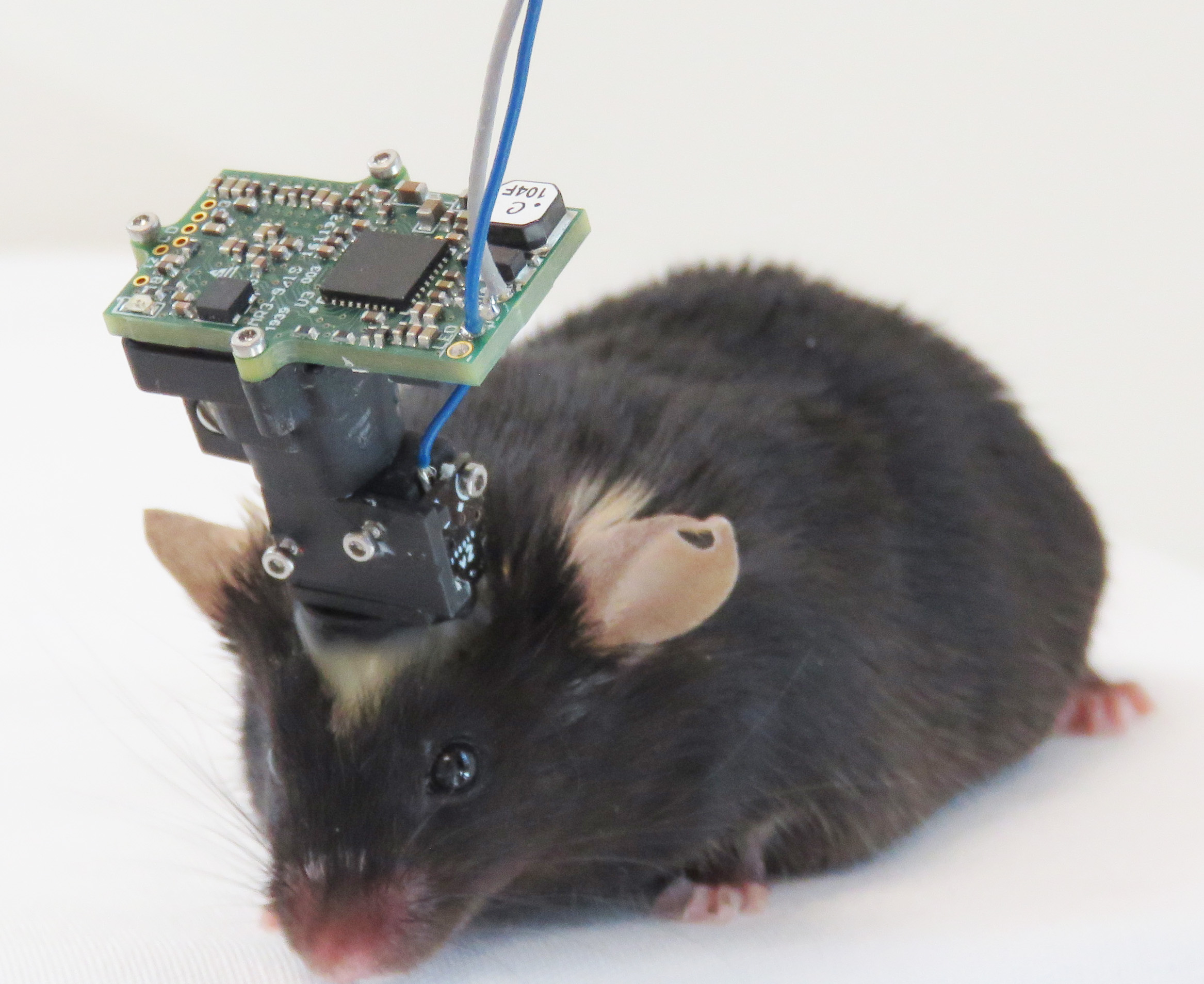
We developed the MiniFAST variant of the UCLA miniscope as part of our work towards enabling imaging of fast genetically-encoded fluorescent neural activity sensors. We are happy to share more design information to facilitate external users.
More information can also be found in our preprint: MiniFAST: A sensitive and fast miniaturized microscope for in vivo neural recording. Jill Juneau, Guillaume Duret, Joshua P. Chu, Alexander V. Rodriguez, Savva Morozov, Daniel Aharoni, Jacob T. Robinson, François St-Pierre, Caleb Kemere. 2020.
Useful items for Widefield imaging
We developed a couple of useful things for widefield imaging which can be found in this repository. First, a simple PCB which plugs into a Teensy 3.6 to facilitate BNC-based pulse sequences, e.g., to drive different wavelength LEDs for hemodynamic normalization. Second, a 3D-printed cone which mounts to an Olympus MVX 10 widefield objective to block out external light from a small field of view.
3D Printed
Ultralight Probe Microdrive
The UPM is a 3D printed design that leverages a shoulder screw design inspired by the Open Ephys shuttledrive and Jadhav Lab designs, in combination with the microdrive design by Mihály Vöröslakos in the Buzsaki Lab. Total weight is ~0.7g. Designs can be found at github.com/ckemere/UltralightProbeMicrodrive

We have also developed a cap and cover designed to integrate with a Diagnostic Biochips probe. Developed for 15g singing mice, the complete cap and microdrive assembly are less than 2.5g.
Virtual Reality
TreadmillIO
The TreadmillIO project combines a USB-based data acquisition system with Python based software. We have used it for VR experiments in head-fixed mice as well as controlling reward for freely moving animals.
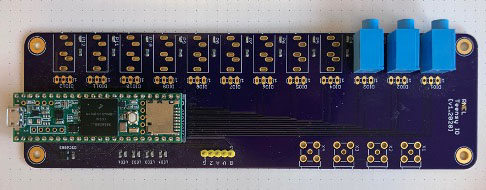
For visual stimuli, we use a distributed renderer, which runs on a Raspberry Pi platform PyRenderMaze.
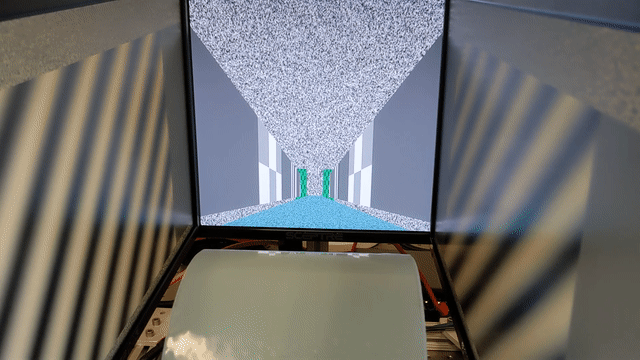
While TreadmillIO provides low latency virtual auditory stimuli, there is also a beta version of a distributed auditory stimuli generator also based on a RasperryPi, which we have used in experiments.
Deep Brain Stimulation
Chronic DBS Module w/Bluetooth
The most recent generation of our chronic brain stimulator is the MiniStiMo. It’s a coin cell battery-powered, constant current biphasic stimulator with a 5V compliance voltage (capable of 100 µA stimulation with a 20 kOhm electrode). Stimulation current and frequency can be controlled with an IOS Bluetooth app.
There are three Github repositories:
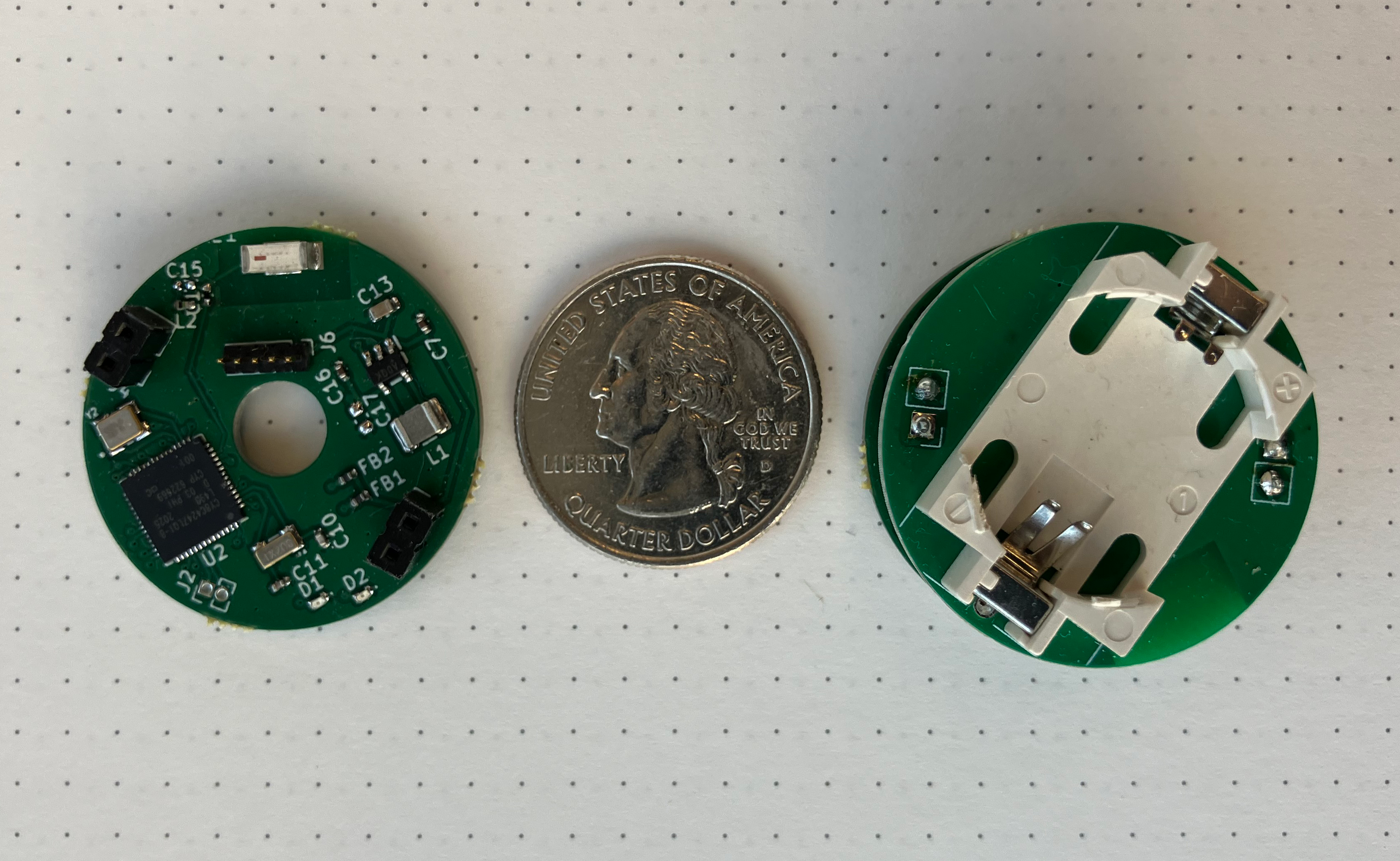
For presentations and papers
RatPack
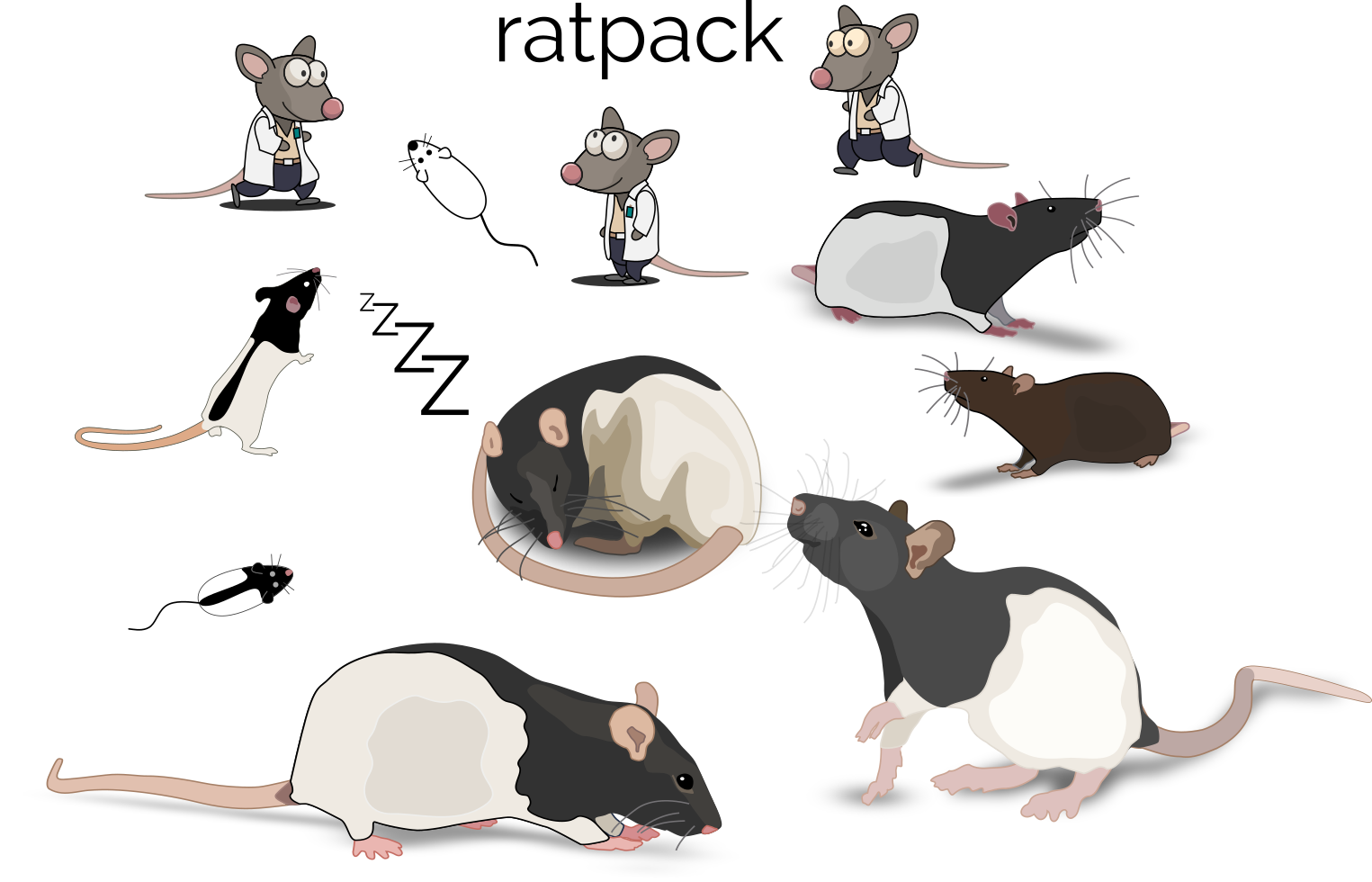
The RatPack is an open source collection of drawings of rats and mice. We invite contributors!